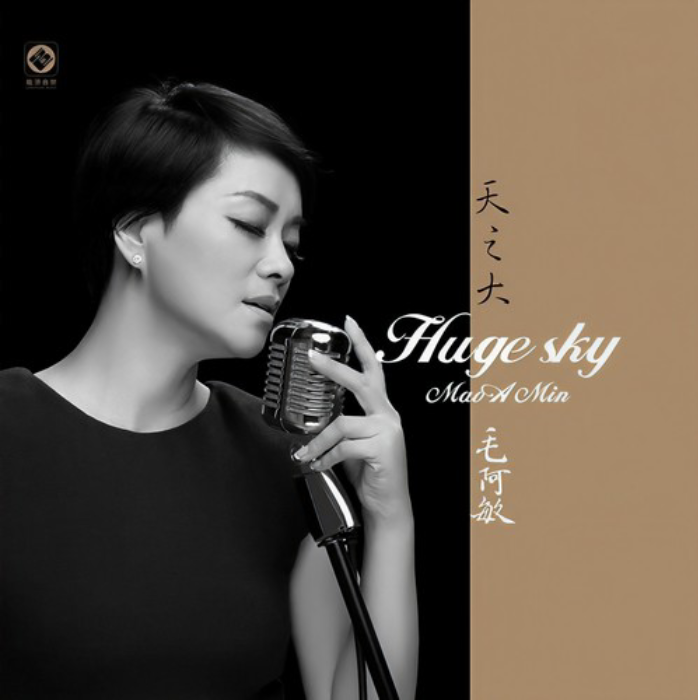HIFI Diary: NICEHCK Rockies 1DD+2BA+2EST Earphone Sound Quality Review
I. Preface
As a BLOG owner who has followed and reviewed every generation of the Yuandao “Tears of Regret” series, I undoubtedly noticed the release of this flagship earphone, which represents Yuandao’s ultimate commitment to using high-quality materials. I wanted to try the Rockies as soon as they came out. However, the official policy of “no 7-day return if unsealed” made the BLOG owner hesitate for a moment (plus, the price on second-hand marketplaces had already dropped to $350…). Just then, an old friend of the BLOG owner said, “Don’t worry about the potential loss!” and bought a pair to send over for review. And so, this review finally came to be.
II. Preparation for the Review
For this review, I used the LaoBanZhang LBZ-04. The testing platforms were a Xiaomi 13 Ultra + QQ Music and a PC + QQ Music. Both the computer and the phone were connected using a dual Type-C cable made from a cut WAGNUS. Omni Sheep cable (costing about $140). The comparison test earphone was the BLOG owner’s personal flagship, the Nestsound ZERO (XY0). Both earphones used a 4.4mm balanced connector. Although the LBZ-04 isn’t a top-tier dongle DAC, it is more than sufficient to understand a ~ $420 earphone. If I were to use a flagship DAP (Digital Audio Player), everything would start to sound good, which is actually unsuitable for testing earphones.
III. Assessment Tracks/Scoring Method
The track selection is based on the blogger’s usual listening preferences, which are about 50% ACG music, 30% modern music, and 20% classical music. Therefore, the selection leans heavily towards Japanese music. The scoring criteria are derived from a simplified version of Liu Hansheng’s “Twenty Essentials for Audio,” with a maximum score of 10, though generally, the highest score given is 9. A score of 8 indicates a clear advantage in the scoring category, 7 signifies excellence, 6 means it can be normally appreciated, 5 means it can be normally listened to, and scores below 5 are not commented on. For a more detailed evaluation plan, please refer to here. It is unfortunate that for this review, no directly comparable products could be found, as there is a significant gap between these and the various dongle DACs the BLOG owner has on hand. Therefore, only a subjective score for the main unit is provided.
IV. Testing Begins
| Item | Yincao Tech XY0 | HIFIMAN Svanar | Moondrop Illustrious | Yuandao Rockies | Moondrop ARIA2 |
|---|---|---|---|---|---|
| Integrity | 8/10 | 7.5/10 | 7.5/10 | 7.5/10 | 7.5/10 |
| High frequency | 8.5/10 | 7/10 | 7/10 | 8/10 | 7/10 |
| Medium frequency | 8/10 | 7/10 | 7.5/10 | 7/10 | 6.5/10 |
| Low frequency | 7.5/10 | 7/10 | 7/10 | 7/10 | 7/10 |
| Resolution, Density | 8/10 | 7.5/10 | 7.5/10 | 7.5/10 | 7/10 |
| Soundstage, Separation | 8/10 | 8.5/10 | 7.5/10 | 8/10 | 6/10 |
| Dynamics, Extension | 8.5/10 | 7.5/10 | 7.5/10 | 8/10 | 7/10 |
| Total score | 8.1/10 | 7.4/10 | 7.4/10 | 7.6/10 | 6.9/10 |
1、歌曲名:愛♡スクリ~ム!,歌手名:AiScReam,专辑名:愛♡スクリ~ム!

This is a Love Live! song that has recently exploded in popularity, going viral on everything from Douyin (the Chinese version of TikTok) to Bilibili. AiScReam is a brand-new, cross-project limited-time unit from the “Love Live!” series. As the new group’s self-titled debut song, a lot of thought was clearly put into it. First, the group’s three members come from three different eras of the “Love Live!” series projects (Aqours, Nijigasaki, and Liella!). And being a limited-time unit, from both a marketing and practical standpoint, means this group and their song are unique and cannot be replicated, which has sparked immense anticipation and a desire to collect among fans (like the BLOG owner).
Deconstructing this song is actually very simple; the most important thing is to understand the multiple meanings of the title. It cleverly combines the group name, song title, and lyrical meaning in multiple ways, reinforcing the impression through catchy, repetitive singing.
- Ice Cream: The core imagery of the song, representing sweetness, colorfulness, and things that bring joy.
- Ai Scream (A Scream of Love): Directly expresses the core theme of idols conveying their love to fans.
The song’s lyrics are quite simple and direct, revolving around “love,” “like,” “conveying feelings,” and “ice cream.” For example, “届け!大好き!” (Todoke! Daisuki! – “Reach you! I love you!”). This is very much in line with the core message an idol song needs to express. In the arrangement, powerful guitar riffs and drum beats form the song’s skeleton, interspersed with numerous 8-bit game sound effects, playful synthesizer tones, and sudden sound effects (like explosions and cheers), creating a chaotic, joyful, and highly concentrated “denpa” feeling typical of otaku culture. This style bombards the listener’s brain with information, producing a strange sense of pleasure. Throughout the song’s structure and arrangement, you can find “empty beats” and “Call & Response” sections designed for live interaction. This is a special technique in idol songs, meant to leave space for fans to do their “calls” (cheers). The entire song maintains an extremely high tempo from start to finish, giving a sense of relentless excitement.
Choosing such a currently popular Love Live! song to start with was partly for the BLOG owner’s personal preference, but more so because it’s right in the Rockies’ sweet spot. Right from the start, the first impression is the Rockies’ stable high resolution, high density, and great separation. Without a doubt, based on these three technical qualities alone, the Rockies firmly establish themselves in the ~$430 price range. As a BLOG owner who has long been listening to electrostatic driver IEMs, I could tell right away that this is indeed the high-frequency characteristic of Sonion’s balanced armatures. The highs are very clean and clear, with a natural ethereal quality. For this kind of youthful, Japanese “moe” sound, the Rockies make it almost irresistible to fall in love with the AiScReam group at first listen and find a dark corner to do fan calls quietly. The song “愛♡スクリ~ム! (Ai♡Scream!)” is actually very representative, incorporating elements of rap, chorus, J-POP, and electronic music. It’s safe to say the Rockies can handle 90% of Japanese pop music with no problem. If I had to point out a problem with the Rockies, it would be their relatively relaxed soundstage and slightly insufficient control, which can sound a bit chaotic during complex electronic passages. However, considering the BLOG owner used a very inexpensive dongle DAC for testing, I believe switching to a front-end source with better control and a more stable sound would resolve this issue.
2、歌曲名:相思,歌手名:毛阿敏,专辑名:天之大

To understand the song “相思 (Lovesickness),” one must first understand its background. As the ending theme for the TV series Journey to the West: A Sequel, the two are inextricably linked, like the legendary friendship of Bo Ya and Zhong Ziqi. The show was controversial in its day, most notably for its “ridiculous” (guichu) fight scenes—where a single action is played forward and backward three times. This makes the show feel quite “meme-worthy” and comical to watch today. However, setting aside the action choreography, its core plot is exceptionally serious and tragic: subversive depictions of gods and Buddhas, the complex humanity and divinity of the character Wutian, and the love tragedies that run through the entire series. In fact, every love story in the series ends in tragedy. When the ending theme plays, Mao Amin’s rich and compassionate voice instantly immerses the audience in the characters’ endless love and pain. It filters out the roughness of the show’s production, purifying and elevating its tragic core.
Next, let’s savor the lyrics. “红豆生南国” (Hóngdòu shēng nánguó – “Red beans grow in the southern land”) is a direct quote from the Tang dynasty poet Wang Wei’s poem “Lovesickness.” These words themselves are part of the cultural DNA for “longing” within the Chinese cultural sphere. It requires little explanation to immediately awaken the cultural memory in the listener’s blood. “最不屑一顾是相思” (Zuì bùxiè yīgù shì xiāngsī – “What’s most easily dismissed is lovesickness”) is the masterstroke of the entire lyrics and best reflects the “subtlety” of Chinese culture. The song sings of “most easily dismissed,” but what it actually expresses is “what’s most impossible to let go of.” This struggle of saying one thing and feeling another is precisely what makes “lovesickness” so torturous—the more you try to forget, the clearer the memory becomes; the more you act like you don’t care, the more turbulent your heart is. This is far more sophisticated, and far more painful, than directly crying out “I miss you so much.”
Finally, there is the singer, Mao Amin. Her vocal color is highly recognizable—not a clear or sweet female voice, but one that is rich and broad, carrying the weight of time. Her voice has an innate “Da Qing Yi” (a dignified, serious female role in Chinese opera) quality—grand and dignified, yet also containing a powerful sense of inclusiveness and compassion. This vocal color is perfectly suited for singing about a restrained yet delicate theme like “lovesickness.” Many cover versions fail to capture the spirit of Mao Amin’s rendition because, ultimately, she isn’t singing about a young woman’s self-pity, but rather the long sigh of a person who has seen the vicissitudes of life, lamenting for the infatuated lovers of the world—fireworks embracing fleeting romance, while true love is absent.
The choice for the second song was actually between Leslie Cheung’s “最爱是谁 My Dearest” (Who is My Dearest) and this song by Mao Amin, “相思 (Lovesickness).” After some hesitation, I ultimately chose “Lovesickness” to better highlight the Rockies’ issues. If the Rockies left a good impression on the BLOG owner with its performance on POP music, this song, “Lovesickness,” immediately filled my head with question marks. This sound was completely different from the Mao Amin in the BLOG owner’s memory. The mid-frequency vocals were very thin, and there was even sibilance. Although the vocals didn’t lack detail, the Rockies’ ability to handle rich, full-bodied vocals was truly disappointing. Faced with this situation, the BLOG owner tried several different ear tips designed to increase the quantity of mid-low frequencies, but none brought significant improvement. It wasn’t until I switched to a Neotech copper-silver hybrid cable costing nearly $290 that the midrange barely returned to a normal level (but this cable wasn’t a good match for the Rockies; although the mids became more normal, the highs and lows fell apart). Overall, with the stock cable, the Rockies almost inevitably have a midrange deficiency. Although the BLOG owner believes this can be partially remedied with high-end cables or EQ on a high-end source, the total investment would skyrocket. For Yuandao, a brand that focuses on cost-effectiveness, this seems like an unacceptable choice.
3、歌曲名:Suite from the Ballet Swan Lake op.20 1.Scene,专辑名:the best of CLASSICAL MUSIC

Tchaikovsky’s Swan Lake is not only the musical soul of the entire ballet but also one of the most beloved melodies in the history of classical music. In 1875, Tchaikovsky was commissioned by the Bolshoi Theatre in Moscow to compose the score for the ballet. At the time, ballet music was generally regarded as an accessory to dance, more functional than artistic. However, Tchaikovsky approached it with the rigorous attitude and rich emotion of composing a symphony, intending to elevate ballet music to an unprecedented artistic height. Unfortunately, the premiere of Swan Lake in 1877 was not a success. Reasons included the technical skills of the dancers, poor choreography, and the orchestra’s difficulty adapting to the “overly symphonic” nature of the music, all of which contributed to the failure of the performance. This was a huge blow to Tchaikovsky, who felt his masterpiece had been ruined. It wasn’t until 1895, after Tchaikovsky’s death, that the famous choreographers Marius Petipa and Lev Ivanov re-staged Swan Lake at the Mariinsky Theatre in St. Petersburg. They deeply understood the drama and depth of Tchaikovsky’s music and created a legendary choreography. This performance was a tremendous success, and Swan Lake has since become synonymous with ballet, while Tchaikovsky’s music is recognized as an immortal masterpiece.
To allow this outstanding music to be performed in concerts independently of the ballet, Tchaikovsky himself selected several of the most brilliant passages and arranged them into the Swan Lake Suite (Op. 20a). “Scene” is the opening of the suite and the core musical motif of the entire work. The piece depicts the classic scene where Prince Siegfried first encounters Princess Odette, who has been turned into a swan by a curse, at the lakeside. Under the moonlight, the lake’s surface shimmers as a flock of swans glides by gracefully, with the noblest among them (Odette) capturing all of the prince’s attention. The music perfectly captures this moment filled with mystery, sorrow, and beauty. The piece begins with the low tremolo of the strings, like a chill in the deep-night forest, full of the unknown and unease. Immediately following, the crisp arpeggios of the harp fall like a ray of moonlight on the lake, instantly breaking the silence and bringing a touch of magic and poetry. The oboe then plays that world-renowned main theme. This melody is exquisitely beautiful, but its underlying tone is one of deep sorrow. It is not like a human cry, but a restrained, noble sadness, as if a swan is silently recounting its unfortunate fate under the moon. You feel a sense of loneliness and beauty that strikes right at the heart. As the French horns and the entire orchestra join in, the main theme is pushed to a magnificent climax. At this point, the music is no longer a personal expression but an epic, fateful cry. The emotional tension reaches its peak, as if one can see the smallness and struggle of the prince and the swan princess in the face of destiny, filled with tragic power. Finally, the music slowly subsides, returning to the mysterious atmosphere of the beginning, leaving behind endless imagination and a touch of melancholy, as if the swans’ figures have disappeared on the distant lake and all is calm again, but that sorrow has been deeply imprinted on the listener’s heart.
Tchaikovsky completely changed the status of ballet music. He proved that ballet music could possess a symphonic structure, depth, and independent artistic value. After Swan Lake, works like Stravinsky’s The Firebird and Prokofiev’s Romeo and Juliet continued this “symphonic” creative philosophy. The main theme of Swan Lake has transcended the realm of classical music to become a global cultural symbol. Whether in movies, commercials, or figure skating competitions, as soon as this melody plays, people immediately associate it with elegance, romance, tragedy, and beauty. It has become a common artistic language. This piece, especially the oboe solo within it, has become a touchstone for measuring a musician’s expressive power. It requires the performer to have not only superb technique but also a profound musical understanding and emotional expression.
Tchaikovsky’s Swan Lake is undoubtedly one of the brightest gems in classical history, and listening to it with the Rockies is certainly a very pleasant experience. The Rockies exhibit the dynamics and density expected of an earphone in the ~$430 price range. Thanks to the beautiful high-frequency timbre of the electrostatic driver, the harp’s performance is particularly impressive. As the piece progresses, the addition of French horns, violins, and violas adds layers to the music, and the Rockies’ control is gradually stretched, but it manages to get through the entire piece without any major loss of control. Overall, when listening to large-scale orchestral music with the Rockies, the issue of thin mids is not prominent; instead, it makes the music’s rhythm feel sharper. For large orchestral pieces that are dominated by tutti passages, this is actually quite advantageous. However, when listening to chamber music, the Rockies sound too sharp and lose their gentle beauty.
V. Summary
Overall, the Rockies are not a particularly satisfying earphone product. Although their abundant energy and density elevate their status when performing large-scale orchestral music, a flagship earphone at the ~ $420 level should not be so heavily specialized. While the components packed into the Rockies are luxurious for their price point, the tuning expertise seems to be lacking. In short, at its current price, the Rockies have excellent highs and decent lows for its price range, but the specialized midrange makes the earphones not a versatile all-rounder. Considering their flagship positioning, unless you know for sure that this is the sound signature you want (which might overlap with users of the Sony MDR-EX1000), I would not recommend choosing them hastily. Regarding source pairing, most decent dongles can drive them reasonably well. However, if you want better low-frequency control, choose a DAP with a well-built amplifier section. As for the midrange issue, unless you use a combination of cable swapping and EQ, it’s pretty much a lost cause.




